The giant Galápagos tortoise is the largest of it’s kind, can reach up to 880 lbs/ 400kg, and reach speeds of 0.3 kmh /0.2 mph. They should not be confused with sea turtles…two completely distinct species! Charles Darwin liked to ride tortoises and noted their delicious meat (from Voyage of the Beagle). Though riding and eating the tortoise sounded fun and delicious, I just took a picture.
Santa Cruz giant tortoises are one of ten sub species of tortoises living on six different Islands. The number of sub species was 11 until the death of “Lonesome George”, last of the Pinta Island tortoises. The speciation of giant tortoises is a fascinating history because some of the sub species can still successfully interbreed which sets off alarms for different types of taxonomists (because they are not really species), however, that is a subject of another post.
Feeding (see video of a giant land tortoise feeding) is primarily on grasses and cactus. Incidentally, food shortages for tortoises have been a major threat to populations on many of the islands. Feral goats and pigs (now with enormous populations) destroy much of the tortoise habitat because goats eat the vegetation while pigs go after the roots leaving nothing behind. This is particularly an issue on Isabela Island where park service hunters routinely seek out and dispatch the invasives.
Giant tortoises, like many large bodied animal species in the Galápagos Islands, have mutual relationships with ground finches. I witnessed finches crawling around tortoise shells but did not realize the depth of the relationship. Finches have been observed approaching tortoises and doing a bit of a dance to get tortoises to stretch out and expose hard to reach areas of the neck and genitalia. Once these areas are exposed the finches remove parasites and get their protein for the day. Mutualism is cool.
The Galápagos giant tortoises breeding program is ongoing on Santa Cruz, San Cristobal, and Isabela Islands. Tortoises at breeding centers in the Galapagos are raised in captivity until they reach 10-20 years of age depending on the program and study. That’s pretty incredible when you consider spending 20% of your potentially 100 year life in captivity. These tortugitas below were six months old at the time of the visit. Note the painted number in the back. Each tortoise is labeled to keep track of basic growth information and they are pit tagged or “chipped” before being set free in the wild.
Here is a tip if you want to see giant land tortoises in the Galápagos Islands. If you do a land based tour just ask a cab driver to take you to see them and negotiate a price you are both happy with ($30 for the car is about fair). If you re doing a cruise based tour and you want to see wild giant tortoises be sure to check your itinerary! It is not always included and you may get confused with breeding centers which are fun but more like a zoo. A simple solution to that problem is booking your return flight so you can stay in Puerto Ayora for another day. See my tips for Galápagos Islands land based tours.
If you found this useful or enjoyed it, please like or share on Facebook, @MichaelJKnoche, Your Circles . You are also welcome to share your link on ExploreDreamDiscover’s Facebook page. Word of mouth is the best way to let the people you know about your positive experiences.
Much more Galápagos Islands travel coming here soon! Link to those posts.
“Twenty years from now you will be more disappointed by the things you did not do than by the ones you did do. So throw off the bowlines, sail away from the safe harbor. Catch the trade winds in your sails. Explore. Dream. Discover …” -Mark Twain
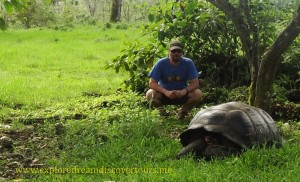
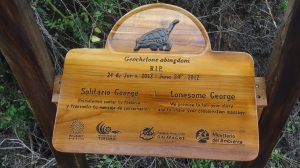

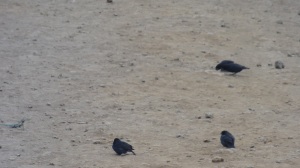
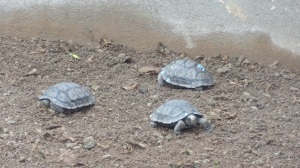
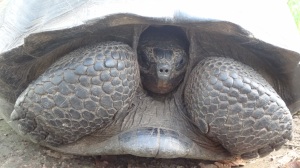
WOW. Epic photos! Great Twain quote, too! Maybe I’ll borrow it for my blog 🙂
LikeLike
My bf loves tortoises and turtles, I hope we will be able to visit Galapagos one day!
LikeLike
You should because he is going to melt when he sees the young being fed at the breeding centers. Stayed tuned for pics of Galapagos Sea Turtles.
LikeLike
Awesome! Can’t wait to see that post. I will show my bf too!
LikeLike
Thank you for liking my blog! I’m glad to have found yours, you have an amazing collection here! A new favorite for me!
LikeLike
Thanks
LikeLike
I love tortoises too, great info. Thanks.
LikeLike
I should have one on sea turtles out in the next few weeks. Cheers
LikeLike
I WANT THIS TO BE MY LIFE. If I could have a pet tortoise my life would be complete. 🙂 Hopefully I will be able to visit the Galapagos soon. Great blog post!
-Daisy
http://discoveringwithdaisy.wordpress.com
LikeLike
Fascinating info – never been to Galapagos – it’s on the list now ;).
LikeLike
This is very informative. Thanks! I’m going to save this post. I hope to visit the Galapagos within the next two years.
Here’s some information I read in the Smithsonian magazine about the Galapagos turtles, taken from the book noted below. “To restock, the Essex (a whaler) anchored at Charles Island in the Galapagos, where the crew collected sixty 100-pound tortoises. As a prank, one of the crew set a fire, which, in the dry season, quickly spread. (Captain) Pollard’s men barely escaped, having to run through flames, and a day after they set sail, they could still see smoke from the burning island. Pollard was furious, and swore vengeance on whoever set the fire. Many years later Charles Island was still a blackened wasteland, and the fire was believed to have caused the extinction of both the Floreana Tortoise and the Floreana Mockingbird.”
The voyage of the Essex was documented in the book “In the Heart of the Sea” by Nathaniel Philbrick. The tragedy of the Essex is what inspired Herman Melville to write “Moby-Dick.”
I read that sailors used to leave pigs and goats on islands so that they would have food when they returned. Look at the trouble they’ve caused!
LikeLike
Yup, when good ideas go wrong. I read that book years ago, I think I’ll have to re-visit. Thanks for sharing that.
LikeLike
Looking forward to the sea turtle pics! One day I’ll visit the Galapagos too!
LikeLike
One of my blog friends has a large tortoise named Darwin, and I know she was inspired by these. 🙂
LikeLike
Before I even read this post I was already all hyped getting reminded of David Attenborough. I can’t tell you the amount of time I spent just sitting there and watching his videos one after another. Nature is really such an amazing thing.
LikeLike
David Attenborough is an incredible man. I can’t believe someone said that one of my post reminded them of him. How cool is that? Funny, I was looking online to by some of his DVD’s becasue I can watch them over and over. What do you do?
LikeLike
I just get engrossed in listening to him narrate about all aspects of life, then before I know it it’s been 3 hours. He really makes me want things to just be simple and back to the primitive ways of life. Very inspiring (: I? I run around bragging bout how I know all the world’s ants are equivalent to the weight of humanity.
LikeLike
That’s cool! I didn’t know that but now I am going to go around telling everyone that too. Thanks.
LikeLike
Is that you on the first image with the giant cutie? Gorgeous photo!
LikeLike
Yes.
LikeLike
It must’ve been an incredible experience … I hope Alaska’s days and nights are treating you well!
LikeLike
Great Post – it’s incredible how Looooooooong these guys live! Wasn’t there a report of one being over 170? We have two in our Zoo in Perth. Awesome.
..and thanks for dropping by – your my first guest from Alaska!
LikeLike
I am not sure about 170. Your question begs the question, how can they age an animal to be 170? I studied bowhead whales in the Arctic ocean years back. Much of our data is collected from whales killed in subsistence harvests. One of my colleagues found and old spearhead in a whale and sent it to be aged. The results came back that that harpoon head had been out of use for 150 years thus suggesting that the whale was at least 150 years old. More harpoon heads were found over time some of which were out of use for 200 years! The half life of amino acids in the eyes of bowheads are now used to estimate age due to the radio half life. The estimates from the harpoon heads and eyes are used in conjunction the bring estimates closer to truth. Last I heard the oldest estimated whale killed was 220. Think about that. That whale was born before commercial whaling ever started. A time when natives only took a few small whales in a year. Then cam the steamers with rocket launched harpoons that decimated the population. Amazing that this whale was witness to all that. Right?
LikeLike
Finches and Turtles..very cool! Thanks for the info!
LikeLike
Very colorful Mike
LikeLike
Colorful good or colorful bad? Am I over analyzing again?
LikeLike
good way
LikeLike
;>)
LikeLike
I would die to travel like this. It is nice to see the photos and read your experiences
LikeLike
I am glad you enjoyed them. I am fortunate to be able to do the things I have done. I am no poet though. I wish I was better with words.
LikeLike
the Galapagos is one place i’d like to go. nice.
LikeLike
It’s great until you come home. Now the mundane, its really mundane! Hope you make it there. I am going to bring a virtual experience here over the next few months. Hope to see you!
LikeLike
Beautiful creatures 🙂
LikeLike
Awesome post Mike … fascinating place!
LikeLike
I am glad to share it. Thanks
LikeLike
This may not have been the intended take-away from your post, but the idea of Darwin ropin’ and ridin’ tortoises gave me a chuckle. 🙂
LikeLike
It was part of the take away for sure! Read that chapter in Voyage of the Beagle. You will see that, though precious in scientific thought, he was just a boy at heart.
LikeLike
Gorgeous capture of natures beautiful wildlife! These tortosies seem like quite the charmers
LikeLike
Pingback: Checklist for travel to the Galápagos | ExploreDreamDiscover Talks
Pingback: Introducing: Birdwatching the highlands and the lowlands of Ecuador | ExploreDreamDiscover Talks
Pingback: Ecuador: How to make chocolate from seed to bar by hand | ExploreDreamDiscover Talks
Thanks for stopping by my blog. This post on giant tortoises was most interesting, especially the part about the mutual relationships with the birds. You scratch my back, I scratch yours!
LikeLike
Thanks, yeah, I learned about that when I got back after the trip. So much more going on there too!
LikeLike